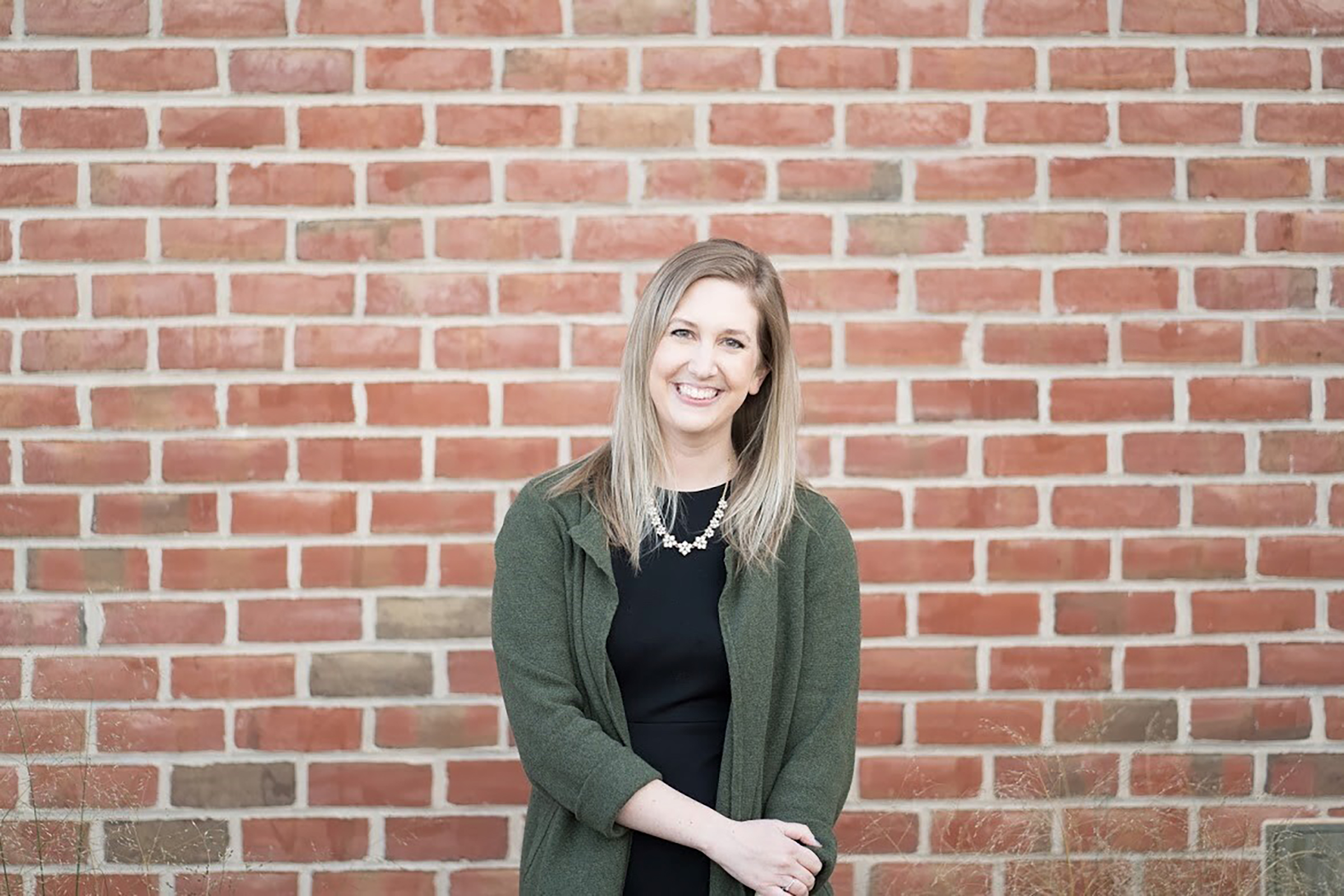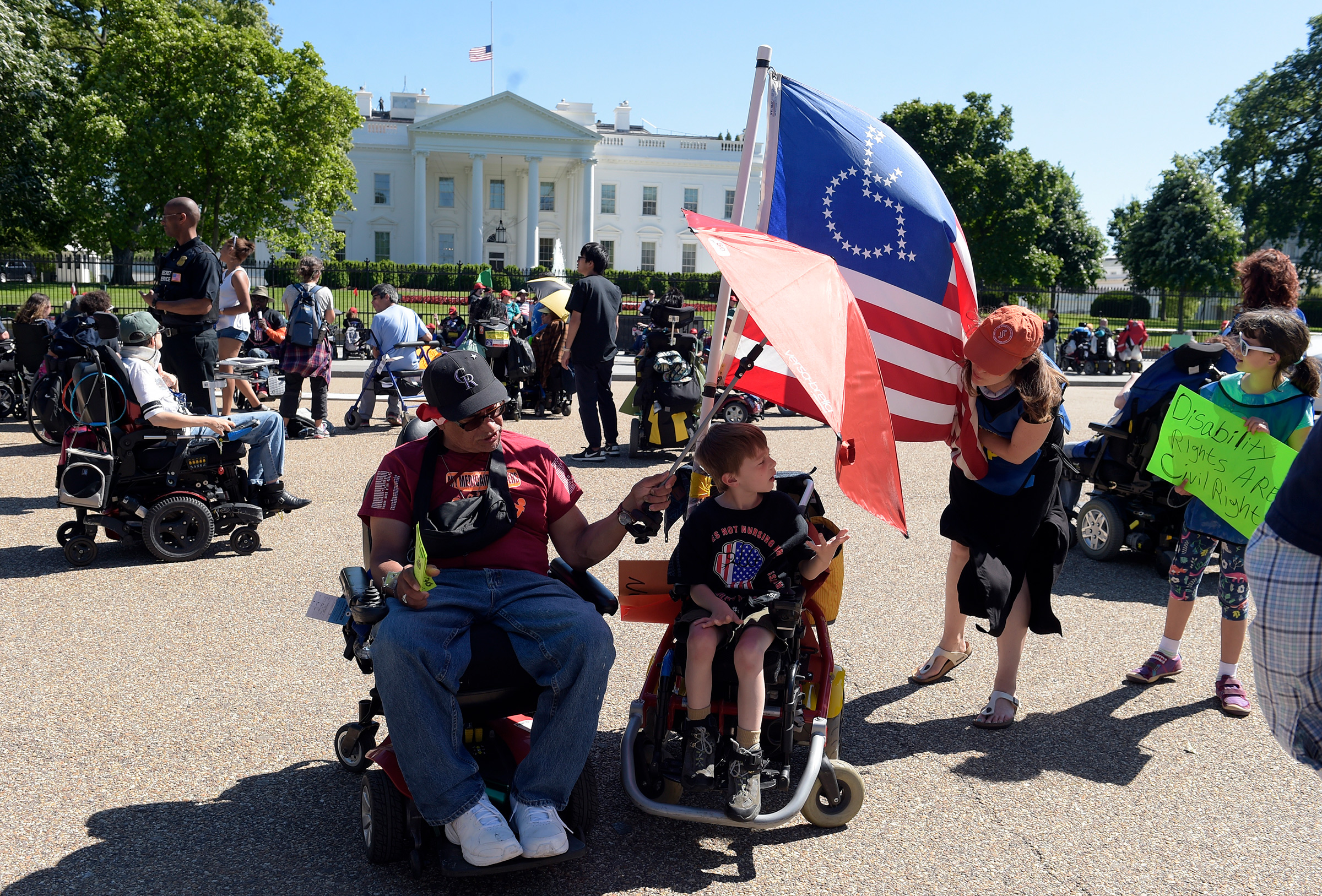
One year ago, on March 11, 2020, the World Health Organization officially declared COVID-19 a pandemic. Since then, 29 million Americans have been infected and more than 500,000 have died.
With spring on the horizon, more Americans getting vaccinated every day, and President Joe Biden laying out an optimistic timeline in an address Thursday night, the country feels as if it is turning a corner. But in many ways, the pandemic recovery is just beginning. The first 50 days of Biden’s presidency have largely been focused on helping Americans who have suffered during the pandemic, including by passing a $1.9 trillion COVID-19 relief bill. But in a historic first, the White House has also named a disability policy director to sit on its Domestic Policy Council and ensure the government is prioritizing Americans with disabilities—including those with lingering disabilities caused by COVID-19.
“We have a lot of people that are going to be starting to identify as people with disabilities in light of COVID,” Kimberly Knackstedt, the new disability policy director, tells TIME on March 11 in her first interview since joining the White House.
Knackstedt has a long history with the disability community. She most recently served as senior disability policy advisor on the Senate Health, Education, Labor and Pensions (HELP) Committee. But she started her career as a special education teacher, where she saw the systemic barriers children face to accessing education. She then went on to get a PhD in special education and policy before working on Capitol Hill. Now, she is in charge of tackling those structural barriers and ensuring equity for disabled people from arguably the most powerful disability rights position in the country.
“One of my key goals is making sure that we are putting people with disabilities at the beginning of our policy development, not as the afterthought, which I think has happened so often,” Knackstedt says.
In previous administrations, staffers who focused on disability issues fell under the offices of personnel or public engagement, and functioned more as liaisons between the disability community and the federal government. Now, the White House director of disability policy is part of the Domestic Policy Council, the body that drives much of the Administration’s domestic agenda. The council, led by Susan Rice, has been given a larger role and more staff than in the past and Knackstedt will work alongside experts on climate, health, education, racial justice and Native affairs to shape policy that impacts all parts of Americans’ lives.
People with disabilities, like many marginalized groups, were hit hard by the coronavirus pandemic. Many Americans with chronic health conditions and other disabilities are at higher risk for severe complications from the coronavirus and have struggled to access basic services over the past year. Before the pandemic, roughly 60 million people, or one in four American adults, had some sort of disability, and now millions more could join their ranks. Studies estimate between 10 and 30% of people who contract COVID-19 experience lingering symptoms, or what has become known as “long-haul covid.”
These Americans may need more health care, new accommodations at work and potentially more government assistance than ever before. Under President Donald Trump, many people with disabilities said they felt abandoned and threatened as his Administration pushed to overturn the Affordable Care Act, limited who could access safety net programs like Medicaid, rolled back disability rights protections and regularly downplayed the deadly COVID-19 pandemic. It is in this context that Knackstedt knows she has a big job ahead of her.
“We’ve seen what happens when we’re not thinking about access, equity and inclusion from the get go,” she says. “And we know that what works for people with disabilities really makes much more inclusive policies across the board.” The White House is looking at “disability as an identity,” Knackstedt says, and how it intersects with race, sexual orientation and gender identity when the Administration crafts policy.
Knackstedt’s new role has been cheered by disability rights advocates. “I’m really excited to see the creation of this position on the domestic policy council,” says Rebecca Cokley, a leading disability rights activist who served in the Obama Administration and previously led the National Council on Disability.
Cokley describes Knackstedt as someone “who was in the trenches with the disability community the last several years” and has relationships with both activists and people on Capitol Hill. “Anytime we see the leadership of a company, of a federal agency, of a foundation, clearly state their commitment to this work, and not just pay it lip service, but actually create a role whose position is serving as a key advisor on these issues, it gives us faith that ideas and proposals that were conceptualized during a campaign or a strategy session will actually be implemented,” Cokley says.
Disability advocates have already seen some major wins since Biden has taken office. The American Rescue Plan includes new funding for home- and community-based services through Medicaid, which disability advocates have been calling for since the beginning of the pandemic. The coronavirus has disproportionately killed people living in nursing homes and other group facilities, underscoring the desire of many people to get the support they need to live in their own homes. The new relief package also includes funding for special education services under the Individuals with Disabilities Education Act, and boosts for programs like the Supplemental Nutrition Assistance Program (SNAP) that serve many disabled people and their families.
“When it comes to the pandemic, where we saw the real dangerous nature of large congregate settings, the alternative to those settings is Medicaid home and community based services. And so we’re really glad to see that dedicated funding for one year to get those programs back to baseline,” says Nicole Jorwic, senior director of public policy at The Arc, a national disability organization that has called for the funding in each coronavirus relief package since last spring.
The Administration has also included people with disabilities in new Department of Labor guidance on accessing accommodations during the pandemic and in a recent executive order from Biden on voting access that featured not only a section on disabled voters but also language around accessibility throughout.

Still, Biden has stumbled, and he and Knackstedt face more challenges ahead. The White House announced in January it would start using sign language interpreters at its press briefings, a historic move that many disability advocates praised. But the first interpreter turned out to have ties to a group that interpreted for far-right videos. Since then, the initial interpreter has not returned and many briefings have featured other interpreters signing along with spoken information. Knackstedt does not oversee the sign language interpreters and the White House did not respond to TIME’s questions about its use of sign language interpreters.
Disability advocates also want to see the federal government improve data collection around people with disabilities who contract COVID-19 and provide more guidance to states on how they should prioritize who is eligible for the coronavirus vaccine, Jorwic says. While the Centers for Disease Control and Prevention (CDC) released vaccine eligibility guidelines, those include a list of just 12 recommended health conditions to prioritize, and some states are not sticking with this guidance at all, meaning that many people with chronic health conditions or certain disabilities are not yet eligible in their states. The White House is aware of these issues and Knackstedt says she is in frequent communication with the White House COVID-19 response team to provide members with data and disability perspectives as their work continues.
Perhaps the biggest challenge ahead is how to handle what could be a massive influx of people living with lingering COVID-19 effects and potentially needing more government support as the country recovers. Knackstedt says she has already been talking with colleagues at the Department of Labor’s Office of Disability Employment Policy about the resources they can offer long-haulers and plans to talk more with other agencies about barriers people face when trying to access government resources.
“They may not know that they have rights. They may not even know that having a chronic condition qualifies you as a person with a disability,” Knackstedt says of people who are experiencing the long-term impact of COVID-19. “So we want to see what we can do to support them.”
Much progress has been made, and disability advocates celebrated the 30th anniversary of the Americans with Disabilities Act last year even as the pandemic raged. But they also know there are many areas of life where disabled people still experience discrimination, and there is more the Biden Administration can do. Biden is already talking about a future infrastructure package that could include more investments in health and caregiving, and Knackstedt is committed to using her role not just to undo Trump-era policies, but also to push disability policy forward.
“We have a lot more to get done to meet the goals of the ADA,” Knackstedt says. “There’s an excitement about getting things done for people with disabilities. It’s a new place to be.”
More Must-Reads from TIME
- Cybersecurity Experts Are Sounding the Alarm on DOGE
- Meet the 2025 Women of the Year
- The Harsh Truth About Disability Inclusion
- Why Do More Young Adults Have Cancer?
- Colman Domingo Leads With Radical Love
- How to Get Better at Doing Things Alone
- Michelle Zauner Stares Down the Darkness
Write to Abigail Abrams at abigail.abrams@time.com